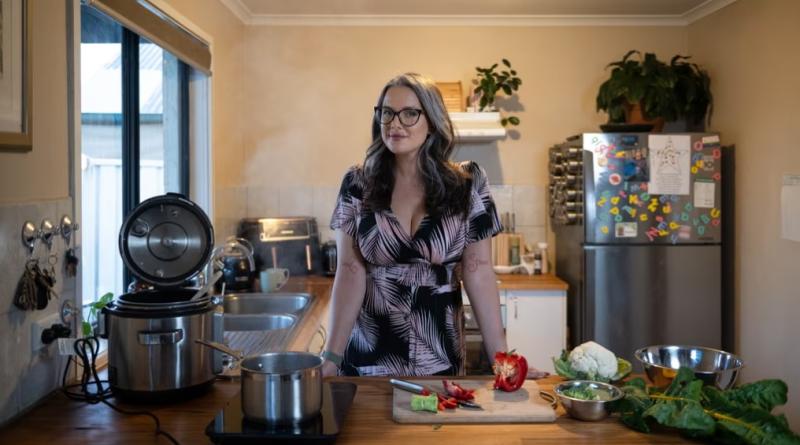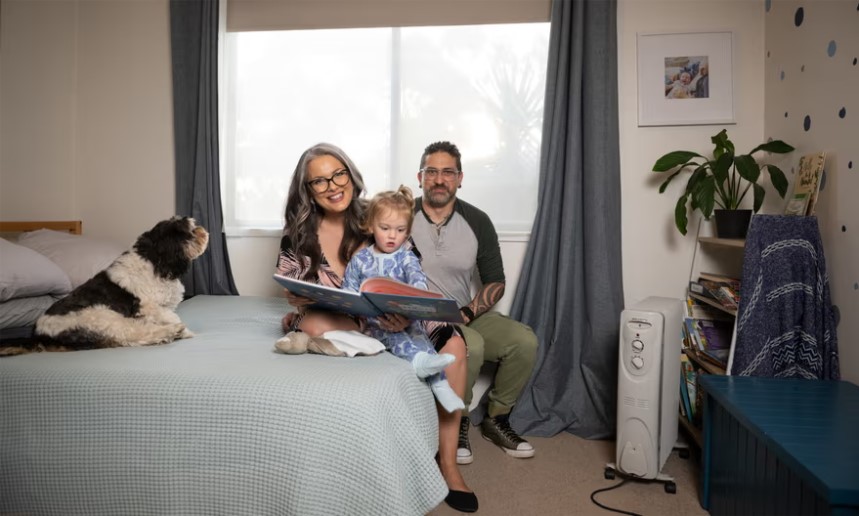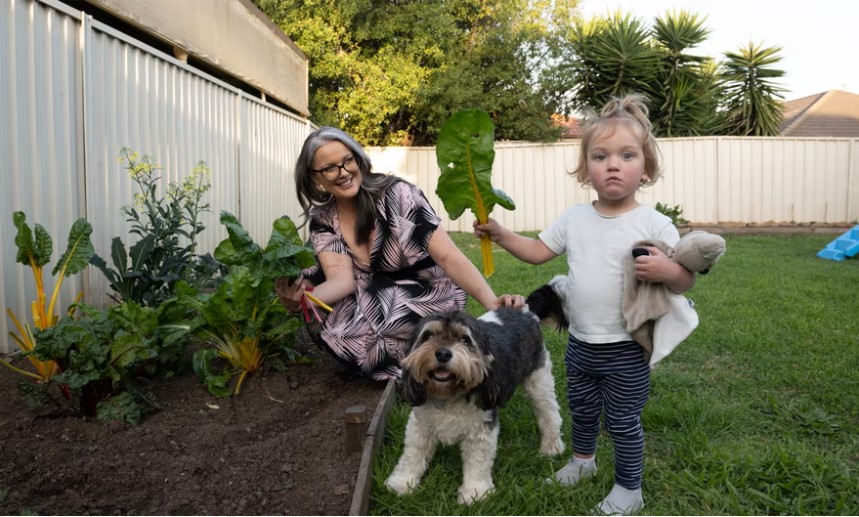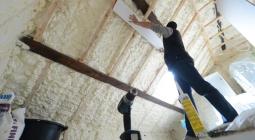I’m a suburban Melbourne renter. Here’s how I weaned my home off gas and saved money on energy bills

After ditching central heating and focusing on power efficiency, we’ve cut our gas usage by 83% and are well on the way to paying off our new appliances
I live in the quiet, leafy west, where houses were built cheaply and quickly, which leaves us all groaning about one thing: gas. These big spacious houses cost an absolute bomb to heat in winter.
Come winter, there’s one three-letter subject that really dominates the outer suburbs of Melbourne, and if you guessed AFL, I’m afraid you’ve missed the mark.
In our household, we already knew gas was a massive driver of climate change. But once we learned our expensive habit was also bad for our health, we decided two years ago to quit for good.
We began by ditching our house’s gas central heating, which had racked up a whopping bill the first winter we lived in this house in 2021. We’ve also focused on energy efficiency, and got a Choice membership to help find reliable appliances to use in the kitchen and our two-year-old son’s bedroom.
Now, the inside of our house is gas free, with only the gas hot water system – which is out of our control as renters – remaining. We’ve cut our gas usage by 83%, reduced our energy bills overall (despite opting for green electricity) and are well on the way to paying off our new appliances.
Here’s how we did it.

Keep the cold out
In addition to opting for more energy-efficient appliances, we made a few small changes around the house to keep our electricity use down and temperatures up. Thanks to much-awaited rental reforms, Victorian renters are now able to do things like drill brackets into window frames to install heavy blackout curtains, which we did in the bedrooms to retain heat. We also purchased door and window seals and plugged up our draughty front door.
Cost: $287 (curtain rod x 2 = $80; blockout curtains x 2 = $192; door and window seals $15)
Heating the house
We were fortunate that in the downstairs of our house, we had a split system already installed. If we gun it on “powerful” for 15 minutes when we wake up in the morning, we’re able to heat our open-plan downstairs kitchen, living and dining areas quick-smart.
To heat the upstairs, I turned to our Choice membership to help understand the most energy-efficient way, which turned out to be oil heaters. I have one I wheel between the bedroom and my home office, and another that stays in my son’s bedroom, where we regularly check the temperature.
Cost: $200 (oil heaters x 2)
Keeping baby warm
We began this journey with a small baby, who was still at an age where he was unable to regulate his own body temperature. With temperatures inside the house sometimes dropping to 14 degrees, this was an important challenge for us if we weren’t going to use central heating.
We invested in a baby monitor with a thermostat, and a clock with a temperature and humidity reading so we could learn about the ambient temperature around him. We also focused on dressing him in high-quality sleep sacks with thermal ratings.
Cost: $11.50 for thermostat clock

Cooking
I’m an avid cook, and was surprised to find this a fun and time-saving experience.
The first step was a multicooker, which eliminates the need for using the gas stove for long periods of time as it’s a pressure cooker, slow cooker and stovetop replacement. The lack of an open flame enabled me to continue cooking while baby-wearing.
Next was an air fryer. Our oven is electric, but air fryers can be less than half the price to run per hour of cooking, which to us was a no-brainer. I’ve been pleasantly surprised at how well it cooks a wide variety of foods.
Finally, we picked up a portable induction stove, which was the real surprise: I am astonished at this little beast. It’s exceptionally powerful, heats up almost instantly to up to 240 degrees and takes up next to no space.
Cost: $736 ($369 multicooker, $238 air fryer, $129 induction stove)
Crunching the numbers
All up, including our Choice membership, we spent $1,318 on new items over a few years on the journey to getting our home off gas.
Our gas use has plummeted from 422 MJ/day two years ago to 70MJ/day this winter. Gas prices have increased a lot in that time, so reducing our usage has saved us about $1,050 this winter alone.
Our electricity use has, of course, increased since ditching gas, and as renters we’re unfortunately locked out of solar. We get our electricity from Diamond Energy after it came first in Greenpeace’s Green Electricity Guide. Our usage has gone up from around 11kWh/day in 2021 to 30kWh/day, an increase of about $500 in our bills. Keep in mind costs have increased in that time too.
That leaves us $550 better off on our energy bills this winter than two years ago. Within three years, all those appliances will be paid off and we’ll be saving money into the future.
And in the meantime, we know we’re doing the right thing for the health of our son, and the health of our planet.
-
Nelli Stevenson is head of communications and investigations for Greenpeace Australia Pacific
Photograph: Penny Stephens/The Guardian - Nelli Stevenson in her rental home in Melbourne. ‘In addition to opting for more energy-efficient appliances, we made a few small changes around the house to keep our electricity use down and temperatures up.





